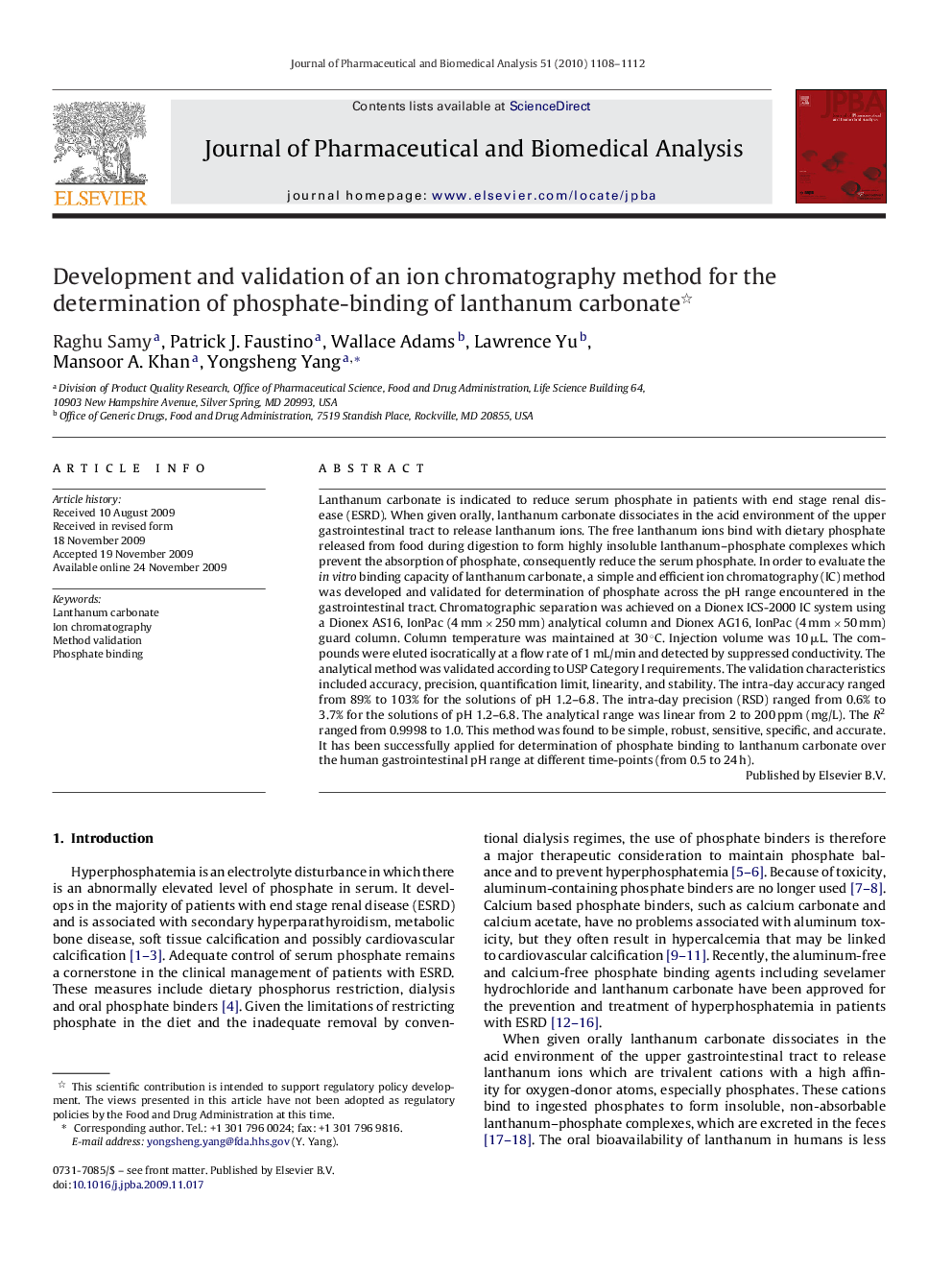| Article ID | Journal | Published Year | Pages | File Type |
|---|---|---|---|---|
| 1222030 | Journal of Pharmaceutical and Biomedical Analysis | 2010 | 5 Pages |
Lanthanum carbonate is indicated to reduce serum phosphate in patients with end stage renal disease (ESRD). When given orally, lanthanum carbonate dissociates in the acid environment of the upper gastrointestinal tract to release lanthanum ions. The free lanthanum ions bind with dietary phosphate released from food during digestion to form highly insoluble lanthanum–phosphate complexes which prevent the absorption of phosphate, consequently reduce the serum phosphate. In order to evaluate the in vitro binding capacity of lanthanum carbonate, a simple and efficient ion chromatography (IC) method was developed and validated for determination of phosphate across the pH range encountered in the gastrointestinal tract. Chromatographic separation was achieved on a Dionex ICS-2000 IC system using a Dionex AS16, IonPac (4 mm × 250 mm) analytical column and Dionex AG16, IonPac (4 mm × 50 mm) guard column. Column temperature was maintained at 30 °C. Injection volume was 10 μL. The compounds were eluted isocratically at a flow rate of 1 mL/min and detected by suppressed conductivity. The analytical method was validated according to USP Category I requirements. The validation characteristics included accuracy, precision, quantification limit, linearity, and stability. The intra-day accuracy ranged from 89% to 103% for the solutions of pH 1.2–6.8. The intra-day precision (RSD) ranged from 0.6% to 3.7% for the solutions of pH 1.2–6.8. The analytical range was linear from 2 to 200 ppm (mg/L). The R2 ranged from 0.9998 to 1.0. This method was found to be simple, robust, sensitive, specific, and accurate. It has been successfully applied for determination of phosphate binding to lanthanum carbonate over the human gastrointestinal pH range at different time-points (from 0.5 to 24 h).
